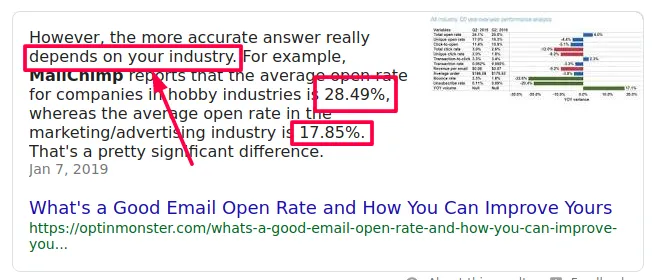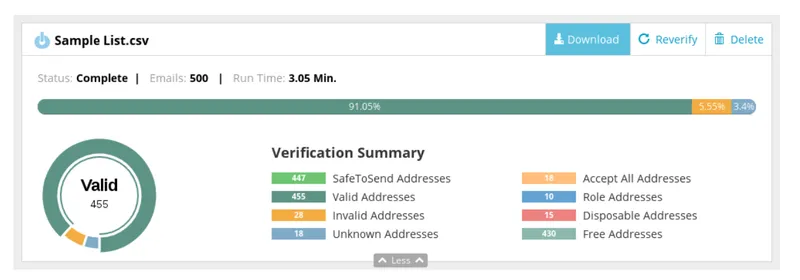

3 things to do with email marketing to get better results
Studies suggest that email marketing has an ROI of 4400%. If that's so, why are you getting such poor results and low ROI in your email marketing campaign?
Writing great stuff is important. But it’s not enough today, considering that we're constantly flooded with content from multiple channels, in multiple forms.
You need to also know how to promote great content effectively.
To promote your content you can either opt for some form of paid ads (e.g. Google ads) or use free platforms (e.g. GrowthHackers) and social media.
Both options have their own pros and cons.
For instance, paid publicity can be extremely expensive. If you try to market your blog with some keywords that are already popular, you might end up paying millions for your ads.
In case of free tools, you can’t always control to whom and to how many people your promotional messages will be shown. That means you can’t control it’s reach.
Email marketing is one of your best options
Fortunately, between paid marketing and free marketing, there lies a middle way.
It’s email marketing and it’s low-cost.
It gives you the benefits of paid publicity (you can control of a lot of things). And yet you need to spend a very small sum as compared to other forms of paid advertising.
Email marketing is arguably the most effective forms of low-cost promotions with a 4400% ROI (Source).
Naturally it isn't a cakewalk.
All of you are aware of email marketing and how powerful it can be. But some of you may not be fully aware of how to make email marketing cost-effectively efficient.
Here are the 3 most basic things you must do if you want email marketing to deliver results:
1. Build a bigger mailing list
This is a no-brainer, right? You’ll say it’s obvious that with a larger mailing list, your traffic will also increase.
You’re right — it is obvious.
But just like everything else in life, sometimes we forget the most obvious things and start working on things that aren’t very important.
How a bigger email list will help: You must understand that not all your subscribers actually read your emails. Some subscribers will delete your email without opening it, many will open it but quickly skim through it. And only the remaining few will read it and likely take action.

As you can see in the above image, email open rates can vary.
So how does that help you get more traffic?
When you have more subscribers, you get more emails opened. And if people like what they read in the email, they will likely forward the email.
That way, some of your subscribers will forward your email to other people who are currently not on your subscriber list. And that way, the non-subscribers will slowly convert into subscribers and readers.
How to build a bigger mailing list: Building a bigger list of subscribers is a separate topic but we’ll mention the important aspects here. Firstly, have a great call to action (CTA). Compare it with popular pages on other sites and see how you can improve.
Next, use every channel to remind visitors that they can subscribe to your emails. Make signing up an easy process.
Promise to deliver value to your subscribers and deliver as promised.
You might want to check out this post for further tips on building a mailing list.
2. Keep your mailing list clean
A mailing list can be called clean when there are practically no invalid or not-safe-to-send email addresses on your list.
Examples of bad addresses include:
- John.someone(at)gmal.com instead of john.someone(at)gmail.com. These are typographical errors.
- Anyname(at)mailinator.com Mailinator is a domain that allows you to have a disposable email address.
- Chirag (@)somedomain.com instead of chirag(at)somedomain.com (The original one has unnecessary space between 'chirag' and the ‘@’ symbol).
- Sales(at)somecompany.com is of no use although it may be valid. Role Address like sales(at)somecompany.com or billspayable(at)domainname.com cannot provide engagement and hence you should keep away from them.
- Julian.Devito(at)somecompany.com may be wrong as there’s no Julian Devito at the domain and the email will bounce back undelivered. An invalid email address, in other words.
How to clean your mailing list: You can do some of the things manually (e.g. check if there are any “gmal” instead of “gmail” or role addresses like sales@, support@). But there are serious problems with manual checking. One, it’d become way too time-consuming once the mailing list grows. Two, you can’t check if the email address is undeliverable.
There are many online email tester tools that do the checking swiftly, securely and reliably. You upload your mailing list into their system and their proprietary software will verify all the addresses. You can download the results, with the emails classified as per their quality.
The following is an illustration of the result of email verification, carried out through the email checker tool QuickEmailVerification. The verification summary is self-explanatory.

How much will it cost: For smaller requirements, like testing 100 email addresses per day, you can get it done free with some companies. As your requirements grow, you can purchase plans which are quite attractively priced.
How it helps: When you use a cleaned list, the email marketing company and the email inbox provider see that your emails are getting delivered and aren’t bouncing back. It's a sign that you aren’t a spammer.
This raises your sender reputation and helps your email land into inbox of recipients (instead of their spam folders).
Seasoned marketers understand the importance of email verification and that's one of most important the reasons they achieve better ROI.
3. Always authenticate your emails
Once you begin sending out hundreds and thousands of marketing emails, the email ecosystem (email carrier, inbox provider etc) notices this. They then check if your emails are authenticated.
Email authentication ... is a collection of techniques aimed at providing verifiable information about the origin of email messages by validating the identities of any message transfer agents (MTA) who participated in transferring and possibly modifying a message.(Wikipedia)
In simpler words, email authentication seeks to establish the authenticity of the message.
Email authentication needs mainly two things. One, you must show that you are a genuine sender who’s sending emails from authorized domains or IP addresses. Two, your emails must reach subscribers the way you wrote them and nobody should have tampered with them before they were delivered.
How you can authenticate your emails: You can use SPF (Sender Policy Framework) record to validate your emails. Setting up SPF record creates a list of all authorised domains and/or IP addresses that are permitted to send emails on behalf of your domain.
The second tool is DKIM (Domain Key Identified Mail). This cryptographic authentication connects a domain name with the contents of the email message. As a result, it can be proven that the email message has not changed since it was sent from the domain and is authentic.
This guide will help you set up the authorization.
How it helps:
It's important for the email ecosystem that you don't abuse email communications by sending spam or phishing emails. While cleaning your email list (Step #2 above) is a good way of making sure you aren’t labelled a spammer, SPF and DKIM help establish your emails are genuine.
Just like email verification, email authentication contributes to strengthening your reputation and improving the deliverability of your emails. When a higher number of your emails reach your subscribers, you start getting results in terms of more traffic, more clicks and more conversions.
Final words
In the world of email marketing, one of the biggest challenge is deliverability. You may send out emails, but how do you ensure your emails are actually delivered?
The three different activities described above go a very long way in establishing your reputation as a genuine marketer who follows email marketing best practices.
It’s sometimes not easy to follow rules in beginning. However, once you see how these efforts bring you better and sustainable results, you actually realise that marketing is all about caring for your prospects and respecting their choices.



